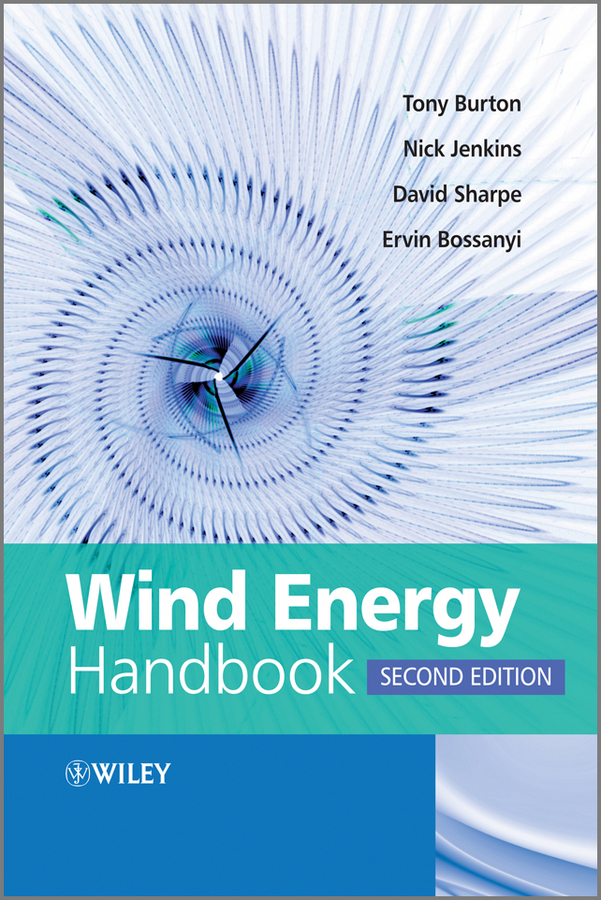Электронная книга: Nick Jenkins «Wind Energy Handbook»

|
Named as one of Choice's Outstanding Academic Titles of 2012 Every year, Choice subject editors recognise the most significant print and electronic works reviewed in Choice during the previous calendar year. Appearing annually in Choice's January issue, this prestigious list of publications reflects the best in scholarly titles and attracts extraordinary attention from the academic library community. The authoritative reference on wind energy, now fully revised and updated to include offshore wind power A decade on from its first release, the Wind Energy Handbook, Second Edition, reflects the advances in technology underpinning the continued expansion of the global wind power sector. Harnessing their collective industrial and academic expertise, the authors provide a comprehensive introduction to wind turbine design and wind farm planning for onshore and offshore wind-powered electricity generation. The major change since the first edition is the addition of a new chapter on offshore wind turbines and offshore wind farm development. Opening with a survey of the present state of offshore wind farm development, the chapter goes on to consider resource assessment and array losses. Then wave loading on support structures is examined in depth, including wind and wave load combinations and descriptions of applicable wave theories. After sections covering optimum machine size and offshore turbine reliability, the different types of support structure deployed to date are described in turn, with emphasis on monopiles, including fatigue analysis in the frequency domain. Final sections examine the assessment of environmental impacts and the design of the power collection and transmission cable network. New coverage features: turbulence models updated to reflect the latest design standards, including an introduction to the Mann turbulence model extended treatment of horizontal axis wind turbines aerodynamics, now including a survey of wind turbine aerofoils, dynamic stall and computational fluid dynamics developments in turbine design codes techniques for extrapolating extreme loads from simulation results an introduction to the NREL cost model comparison of options for variable speed operation in-depth treatment of individual blade pitch control grid code requirements and the principles governing the connection of large wind farms to transmission networks four pages of full-colour pictures that illustrate blade manufacture, turbine construction and offshore support structure installation Firmly established as an essential reference, Wind Energy Handbook, Second Edition will prove a real asset to engineers, turbine designers and wind energy consultants both in industry and research. Advanced engineering students and new entrants to the wind energy sector will also find it an invaluable resource. Издательство: "John Wiley&Sons Limited"
ISBN: 9781119992721 электронная книга Купить за 11964.9 руб и скачать на Litres |
Другие книги автора:
| Книга | Описание | Год | Цена | Тип книги |
|---|---|---|---|---|
| Smart Grid. Technology and Applications | Electric power systems worldwide face radical transformation with the need to decarbonise electricity supply, replace ageing assets and harness new information and communication technologies (ICT)… — John Wiley&Sons Limited, электронная книга Подробнее... | электронная книга |
См. также в других словарях:
Wind gradient — In common usage, wind gradient, more specifically wind speed gradientcite book | last = Hadlock | first = Charles | title = Mathematical Modeling in the Environment | publisher = Mathematical Association of America | location = Washington | year … Wikipedia
Wind turbine — Offshore wind farm using 5MW turbines REpower 5M in the North Sea off Belgium This article discusses wind powered electrical generators. See windmill for wind powered machinery used to grind grain or pump water. A wind turbine is a device that… … Wikipedia
Wind shear — Wind shear, sometimes referred to as windshear or wind gradient, is a difference in wind speed and direction over a relatively short distance in the atmosphere. Wind shear can be broken down into vertical and horizontal components, with… … Wikipedia
Energy harvesting — (also known as Power harvesting or energy scavenging ) is the process by which energy is captured and stored. Frequently this term is applied when speaking about small autonomous devices, like those used in sensor networks. A variety of different … Wikipedia
Wind — For other uses, see Wind (disambiguation). Wind, from the … Wikipedia
Energy policy of the United Kingdom — For energy use in practice, see Energy use and conservation in the United Kingdom The current Energy Policy of the United Kingdom is set out in the Energy White Paper of May 2007, building on previous work including the 2003 Energy White Paper… … Wikipedia
